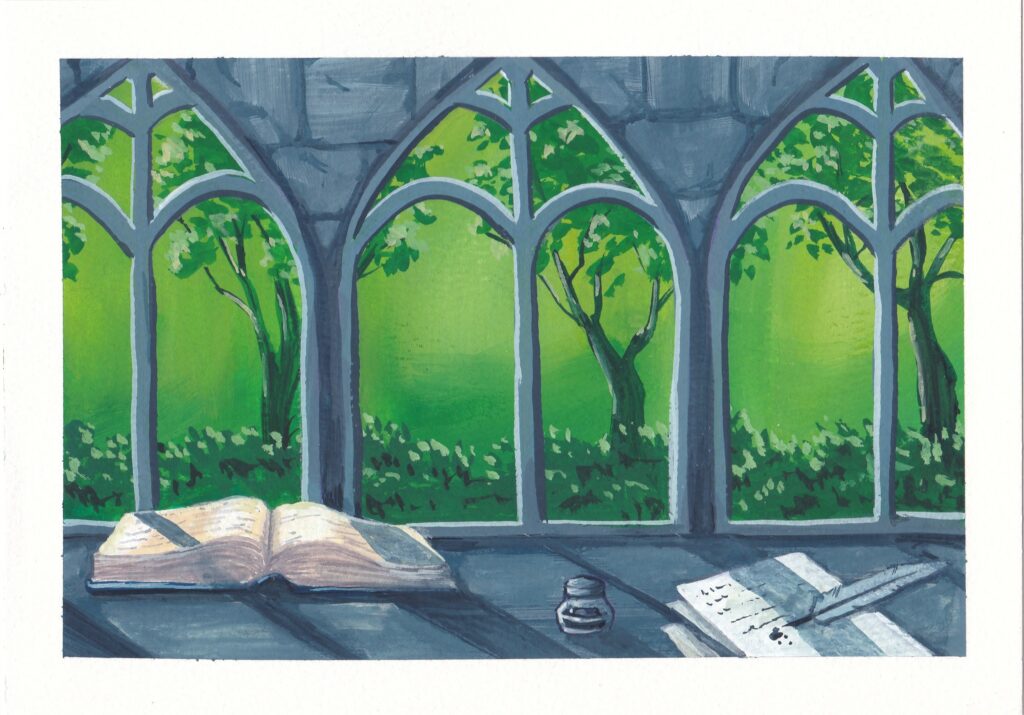
The beginning (first modern World Series) and thus the end (as far back as we can go). The timeline that led here:
1876: Start of the National League, the original major league. It has eight teams, two of which still exist today as the Braves and Cubs.
1882: Start of the American Association, the second major league. It had six teams (though it quickly expanded to eight), three of which survive as the Cardinals, Pirates, and Reds.
1884-1890: The winners of the two leagues play a postseason championship series. Its length and format differs each year.
1892: The American Association folds. Four of its teams join the National League, which now has twelve. The schedule is divided into first and second halves, the winners of which play a postseason series for the championship, but this experiment is not repeated.
1894-1997 and 1900: The first and second-place teams play a postseason series for the championship.
1900: The National League contracts to eight teams, all of which still exist.
1901: The American League, which had been a minor league, declares itself a major league. It had eight teams, all but one of which (the Baltimore Orioles, replaced by the New York team) survive.
The National League’s response to this unwanted competition was to disparage and attempt to destroy it. That failed, and by 1903 they were willing to resume the tradition of a postseason series. As usual, this was agreed between the teams, not the leagues. They settled on a best-of-nine.
1903
The Boston AL team, led by Cy Young, faced the Pittsburgh NL team, led by Honus Wagner. Wagner was one of the first class of Hall of Famers in 1936; Young followed him in 1937. In 1903 Young had won 28 games with an ERA of 2.08; Wagner batted .355. Both teams had won 91 games. Sounds like a toss-up, right? But Wagner was injured for the Series, hitting just .226, and that was the edge Boston needed. They won the Series 5-3.
1904
The pennant winners were the Giants of the NL and Boston of the AL. But John T. Brush, owner of the Giants, refused to play against an an “inferior league”, a stance in which he was no doubt supported by his player/manager John McGraw, who’d feuded with AL president Ban Johnson as player/manager of the now defunct AL Baltimore franchise. Thus, no Series this year.
This was an extremely unpopular decision, and Brush himself wrote the rule making the World Series an official part of the schedule. This was adopted by both leagues, and there’s been a Series every year since except the strike year of 1994.
1905
The Giants again, this year against Connie Mack’s Philadelphia Athletics. The Giants were led by all-time great pitcher Christy Mathewson, who’d won 31 games with an ERA of 1.28. Rube Waddell of the Athletics was almost as good at 27 and 1.48, but he was injured and missed the Series. Mathewson won three, all shutouts (Iron Man Joe McGinnity won the other one) and it was Giants 4-1.
1906
An all-Chicago Series. The Cubs were already Tinker-to-Evers-to-Chance and managed by “Peerless Leader” Chance, though their outstanding player was pitcher Three Fingers Brown (1.04 ERA). The White Sox featured George Davis at shortstop. He’s possibly the most obscure Hall of Famer, having vanished from public view after retiring from play and a brief managing and scouting career. Brown lost two of his three starts and the White Sox won 4-2.
1907
Cubs again, this time with three great pitching performances from Brown, Carl Lundgren, and the wonderfully named Orval Overall. In the other corner, the Detroit Tigers, led by Ty Cobb. Cobb was simply the best player in baseball, a great hitter and baserunner. In the initial voting for Hall of Fame, Cobb was on 98 percent of ballots, beating the Babe, who was merely on 95 percent. Cobb was the principal star of the deadball era. But he had a terrible Series (.200/.238/.300), the Tigers managed only six runs in five games, and they lost 4-0-1.
1908
A rematch. This was the year of Merkle’s Boner. In a Cubs-Giants game in September, the score was tied in the bottom of the ninth. The Giants’ Fred Merkle was the runner at first base with the winning run on third. The batter hit a clean single to center, appearing to score the winning run. Fans rushed on to the field to celebrate, and Merkle, seeing his way blocked, ran straight to the dugout without touching second base The Cubs appealed at second, and Merkle was ruled out, meaning the run didn’t count. With little hope of resuming the game with now incensed fans all over the field, the game was declared a tie. The Cubs won the makeup game and thereupon the pennant by one game.
Cobb had a good Series at .368/.400/.421, but he was alone; overall the Tigers were .209/.273/.241 and lost 4-1, Brown and Overall each winning two. The Cubs turned their rules lawyering into a chamionhip, but it’s the last one they’ll win until 2016
1909
The Tigers once more, this time against Honus Wagner’s Pirates. Wagner had his usual great season at.339/.420/.489, all three numbers league-leading, while Cobb was even better at 377/.431/.517. It was a hard-fought, back and forth Series, but in the deciding game 7, Detroit committed 3 errors and walked 10 and Pittsburgh won 8-0.
Recap: Cubs 2-1, Pirates 1-1, Boston(AL), Giants. and White Sox 1-0, Athletics 0-1, Tigers 0-3.






